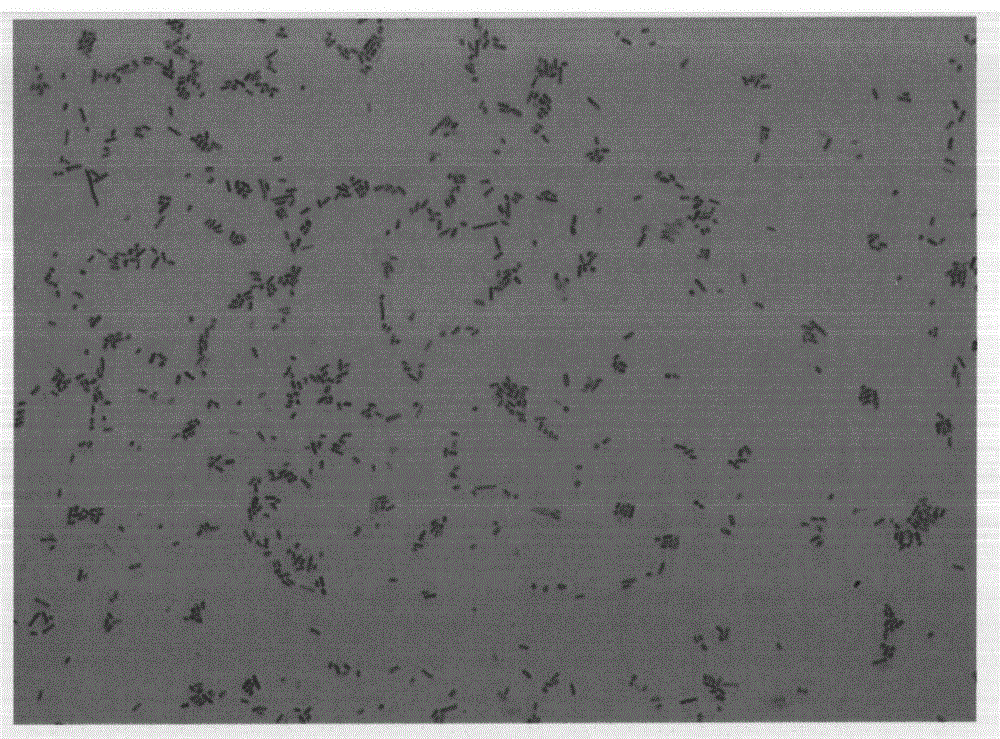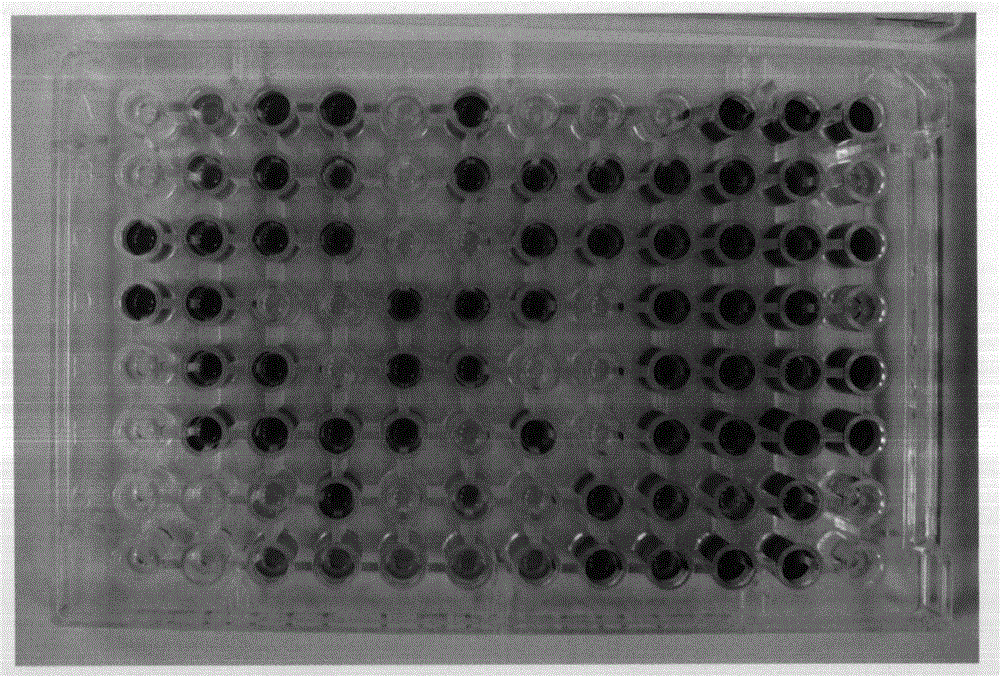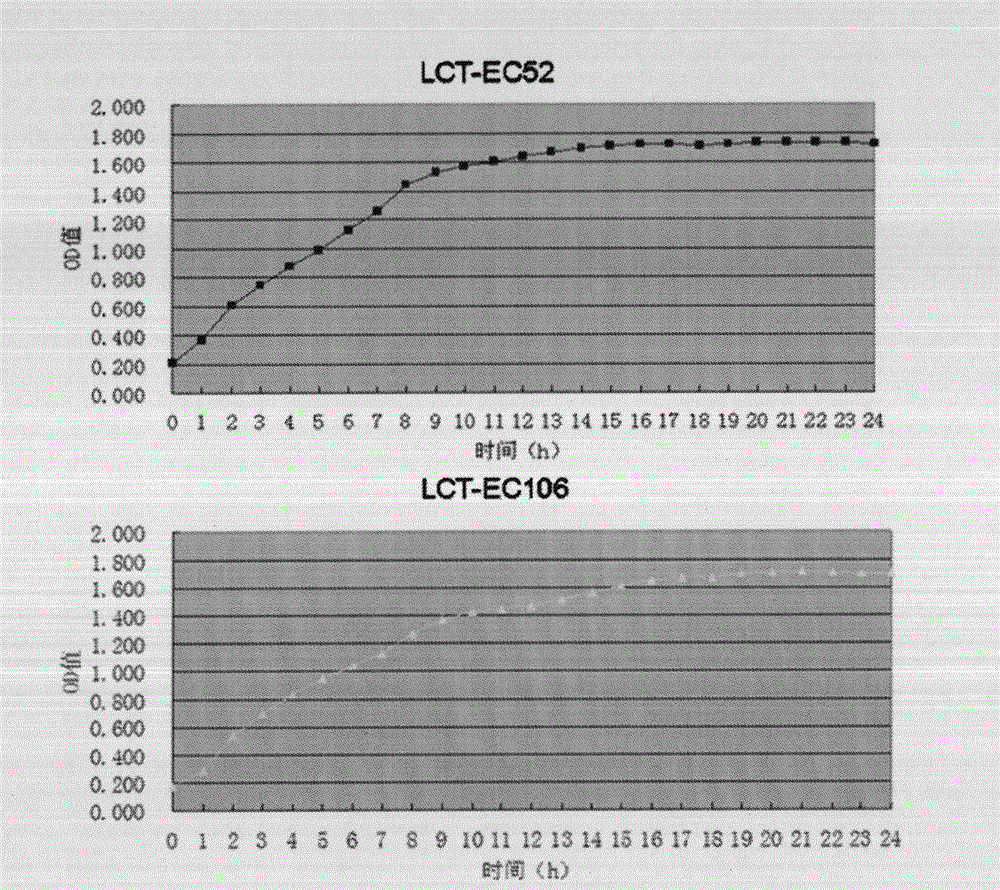LCT-EC 52 bacteria strain of esherichia coli under space environment
A technology of LCT-EC52 and Escherichia coli, which is applied in the direction of bacteria, microorganisms, biochemical equipment and methods, and can solve problems such as food poisoning
- Summary
- Abstract
- Description
- Claims
- Application Information
AI Technical Summary
Problems solved by technology
Method used
Image
Examples
specific Embodiment 1
[0023] Specific implementation example one phenotype of LCT-EC52
[0024] 1. Strain: Escherichia coli LCT-EC52 The preservation number is: CGMCC
[0025] 2. Morphology: The original sample was diluted and spread, and then Gram stained. LCT-EC52 is a Gram-negative bacillus without spores, and the bacteria are arranged in a single way, such as figure 1 .
[0026] 3. Identification of 16s rDNA of LCT-EC52 strain: 16S rDNA is the gene of 16S rRNA sequence, about 1.5kb in length. Amplify the 16S rDNA of the purified single bacteria directly by bacterial liquid PCR, and some single bacteria that are difficult to amplify by bacterial liquid PCR are expanded and cultured, and then the genome is extracted and then amplified. The primer sequence used for amplification is as follows: SgF(AGAGTTTGATCATGGCTCAG) , SgR (TAGGGTTACCTTGTTACGACTT), 16S rDNA PCR products were purified with a 96-well millpore purification system and quantified accurately, sequenced by an ABl3730xl automatic seq...
specific Embodiment 2 LCT-EC52SolexaDNAPaired-End。DNA, approach LCT-EC52,、、、、75%、RNaseRNA and DNALCT-EC52DNA, test 。CovarisDNA 1 DNA;T4DNA Polymerase、KlenowDNA Polymerase and T4PNK,3′“A”,DNA and 3′“T”,,PCRDNA;500bp and 6000bp。 to and ;SOAPdenovo V1.05 and SOAPaligner/soap2reads。 and ;Glimmer3.0 and , to corresponding 。LCT-EC525,209,752bp,GC50.37%。191contigs,37scaffolds。Glimmer version3.025,075。SNP,1,SNP, and and 。 specific Embodiment 3
[0033] 7. Growth curve measurement: After the strain is activated, it is inoculated into a 100-hole honeycomb plate, and the growth curve is measured in the Bioscreen, measured for 24 hours, and the data is read. Calculate the average value of the obtained OD value, and then draw the curve. Compared with the ground control strain LCT-EC106 of Escherichia coli space strain LCT-EC52, there is no significant difference in its growth curve, as shown in image 3. Specific implementation example 2 Whole genome sequencing of Escherichia coli space-mutated strain LCT-EC52 High-throughput Solexa sequencing technology was used to perform Paired-End sequencing on the DNA of the sample. Firstly, the genomic DNA of the bacteria was extracted, and the cells of E. coli LCT-EC52 were collected by centrifugation. After resuspension, lysis, extraction with phenol and chloroform, precipitation with isopropanol, washing with 75% ethanol, removal of RNA by RNase, and dissolution of genomic DNA, t...
specific Embodiment 4
[0037] The proteomics of E.coli space mutagenesis bacterial strain LCT-EC52 of concrete implementation example
[0038] We used iTRAQ relative quantification technology to conduct proteomic research on Escherichia coli space mutant strains and ground control strains. First, the protein is extracted from the sample, and the extracted protein sample is reductively alkylated to open the disulfide bond so that the protein can be fully enzymatically hydrolyzed. The concentration of protein was determined by the 2Dquant kit method of GE Company. SDS (sodium dodecylsulfonate) electrophoresis was carried out with equal volume. Proteins are digested into peptides using trypsin. Peptides were labeled with iTRAQ reagent. The labeled peptides were mixed in equal amounts, and the mixed peptides were pre-separated by strong cation exchange chromatography (SCX) for liquid phase tandem mass spectrometry (LC-MS / MS) analysis. For the original file of the mass spectrometer, perform peak iden...
PUM
 Login to View More
Login to View More Abstract
Description
Claims
Application Information
 Login to View More
Login to View More - R&D Engineer
- R&D Manager
- IP Professional
- Industry Leading Data Capabilities
- Powerful AI technology
- Patent DNA Extraction
Browse by: Latest US Patents, China's latest patents, Technical Efficacy Thesaurus, Application Domain, Technology Topic, Popular Technical Reports.
© 2024 PatSnap. All rights reserved.Legal|Privacy policy|Modern Slavery Act Transparency Statement|Sitemap|About US| Contact US: help@patsnap.com










